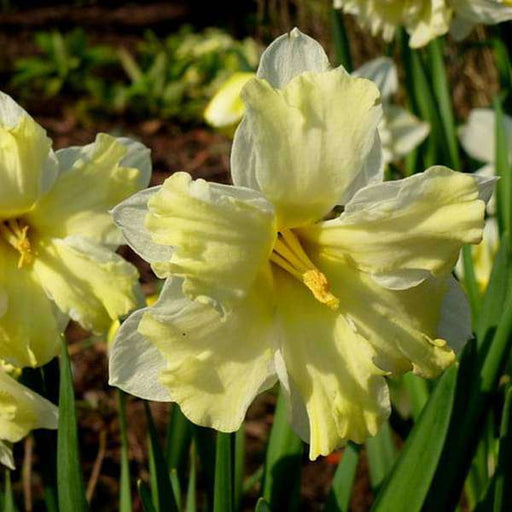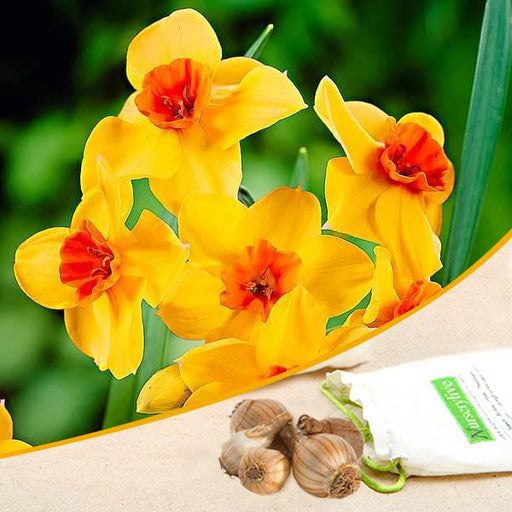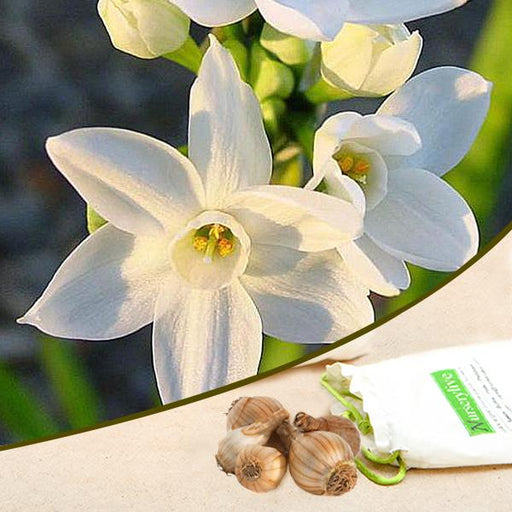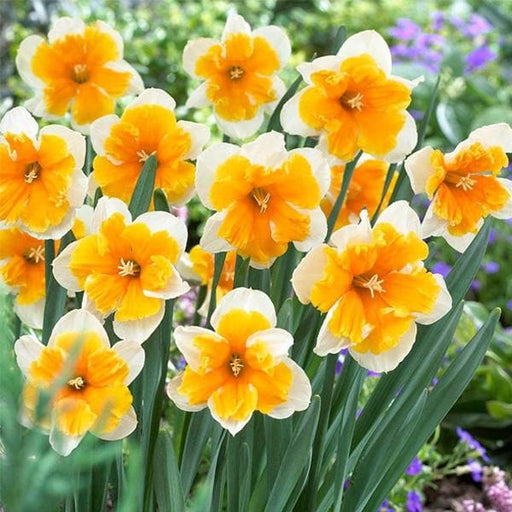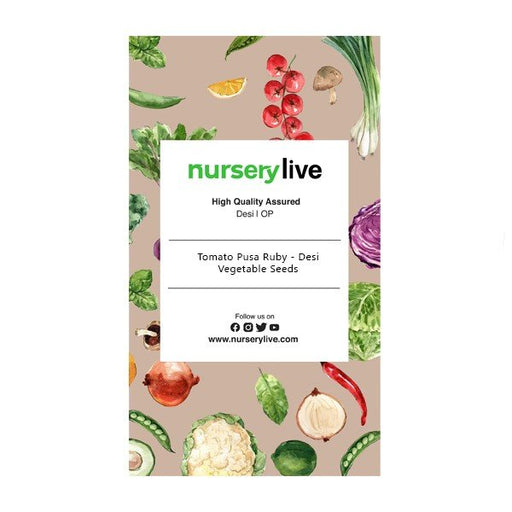Types of daffodils
Daffodils are a popular type of spring-flowering bulb that come in many different varieties. From traditional yellow daffodils to pink and white variations, there's a daffodil for every taste.
Daffodil planting
Planting daffodils is a simple and rewarding task. With a little bit of planning and the right technique, you can enjoy a beautiful display of daffodils in your garden every spring.
Daffodil care
Once your daffodils are planted, it's important to take care of them properly. This includes watering them regularly, fertilizing them when needed, and protecting them from pests and diseases.
Daffodil bulbs
Daffodil bulbs are the key to growing beautiful daffodils. They come in many different sizes and varieties, and should be planted in the fall for best results.
Daffodil propagation
If you're looking to increase your daffodil collection, propagation is a great option. This involves dividing existing bulbs and planting them in new locations.
Daffodil symbolism
Daffodils are a symbol of rebirth and new beginnings. They're often associated with spring and the renewal of life.
Daffodil arrangements
Daffodils are a popular flower for arrangements and bouquets. Their bright yellow color and unique shape make them stand out in any arrangement.
Daffodil bulbs for sale
If you're looking to purchase daffodil bulbs, there are many options available. You can find them at your local garden center, online, or through mail order catalogs.
Daffodil planting tips
To ensure your daffodils thrive, it's important to follow some basic planting tips. These include selecting the right location, planting at the right depth, and using the right soil.
Daffodil varieties
There are over 50 different types of daffodils to choose from. Some of the most popular varieties include the classic yellow daffodil, the white Thalia daffodil, and the pink and white Ice Follies daffodil.
Daffodil diseases
Like any plant, daffodils are susceptible to diseases. Common diseases include crown rot, bulb rot, and yellow stripe virus. It's important to identify and treat these diseases early to prevent damage to your bulbs.
Daffodil pests
Daffodils can also be affected by pests such as aphids, thrips, and slugs. Proper care and management can help prevent infestations and protect your bulbs.
Daffodil pruning
After your daffodils have finished blooming, it's important to prune them properly. This helps promote healthy growth and ensures they'll bloom again next year.
Daffodil container gardening
If you don't have space for a traditional garden, daffodils can be grown in containers. This is a great option for patios, balconies, and other small spaces.
Daffodil naturalizing
Daffodils can be left to naturalize in your garden, which means they'll spread and multiply on their own. This creates a beautiful and low-maintenance display.
Daffodil forcing
If you want to enjoy daffodils indoors before they bloom outside, forcing is a great option. This involves chilling the bulbs for several weeks before planting them in pots.
Planting Daffodil Bulbs in Containers
Daffodils are easy-to-grow spring-flowering bulbs that can be planted in containers and placed on patios or balconies for a pop of color. Learn how to properly plant daffodil bulbs in containers and care for them to ensure a beautiful display in the spring.
Daffodil Bulbs for Landscaping
Daffodils are a great addition to any landscape, providing a bright and cheerful display in the spring. Learn about the different types of daffodil bulbs that are best for landscaping, as well as tips for planting and caring for them.
Miniature Daffodil Bulbs
If you're short on space, miniature daffodil bulbs are a great option for adding color to your garden or containers. Learn about the different varieties of miniature daffodil bulbs, as well as planting and care tips.
Double Daffodil Bulbs
Double daffodil bulbs are prized for their large, showy blooms and come in a variety of colors. Learn how to plant and care for double daffodil bulbs, as well as design ideas for incorporating them into your landscape.
Daffodil Bulbs for Naturalizing
Daffodils are a popular choice for naturalizing, as they multiply quickly and require little maintenance. Learn about the best daffodil bulbs for naturalizing, as well as tips for planting and care.
Daffodil Bulbs for Cut Flowers
Daffodils make great cut flowers, with their long stems and cheerful blooms. Learn about the best daffodil bulbs for cut flowers, as well as tips for growing and arranging them.
Daffodil Bulbs for Indoor Forcing
Daffodil bulbs can be forced indoors for an early burst of spring color. Learn about the best daffodil bulbs for indoor forcing, as well as tips for planting and care.
Daffodil Bulbs for Container Gardening
Daffodil bulbs are well-suited for container gardening, as they can be grown in pots on patios or balconies. Learn about the best daffodil bulbs for container gardening, as well as tips for planting and care.
Daffodil Bulbs for Rock Gardens
Daffodils are a great addition to rock gardens, providing a pop of color in early spring. Learn about the best daffodil bulbs for rock gardens, as well as tips for planting and care.
Daffodil Bulbs for Companion Planting
Daffodils make great companion plants, helping to deter pests and attract beneficial insects. Learn about the best daffodil bulbs for companion planting, as well as tips for designing your garden.








